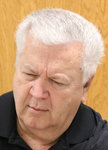



LEE COUNTY – The Lee County Board of Supervisors is moving forward with intentions to create an ordinance to protect the county and landowners as utility projects continue to pop up in the county.
Lee County Board chair Garry Seyb said he would like to see a consensus from the board to move in one direction or another.
“Is this something we want to explore, then I think next week we vote on that. Not necessarily an ordinance, but the fact that we are going to do it.”
Supervisor Tom Schulz said the board needed to have consensus to move forward into developing something more substantive.
Supervisor Ron Fedler said the board should move forward, but rural residents need to have an opinion because of the impact to that group.
“You’re not going to put a wind tower or a solar field inside Fort Madison or Keokuk or any of that stuff,” Fedler said. “But they would have their two-mile radius around the town where they can have a say so in it.”
Zach James and Jarred Lassiter of Southeast Iowa Regional Planning Commission were on hand at the meeting and said they wouldn’t put a timetable on the issue.
“I don’t know that I would put a specific timetable out there. It would take quite awhile to put something together,” James said.
Lassiter said there was precedent for zoning vs a stand-alone ordinance but said everyone has their own preferences.
“Plus, (an ordinance) doesn’t necessarily have to follow the framework of a comprehensive plan.
Seyb said an ordinance can be done without creating anything additional. The board could vote on that and it would be enforceable. He said with the zoning, the county would have to stand up a planning and zoning committee as part of the board to regulate the zoning.
“The additional time involved would be setting up those additional subsets,” he said.
Lassiter said there would also be the day-to-day impact of the zoning, which would involve permitting.
Schulz said the county would be building additional bureaucracy.
Lassiter said in addition to appointed boards, there would also have to be an administrator for the county zoning board.
“The planning and zoning would oversee the public hearings and provide technical guidance to supervisors,” Lassiter said.
He said the key thing in determining whether to go with a stand-alone ordinance or zoning, the stand-alone ordinance would have to be geared toward conditions for making the project acceptable.
“We’re not saying that the project would be acceptable here or there in particular zones. It’s not the same as zoning where you identify (a specific zone or zones), but regulating them wherever they may occur to make sure basic protocols are followed,” he said.
Lassiter provided a comparative document looking at zoning vs an ordinance and Seyb said he appreciated that because the two are not the same and it took him two or three read throughs to get an understanding.
County Engineer Ben Hull said the county has not done anything with windfarms like other counties have encountered. He said the county needs to pay attention to setbacks, fencing, and administrative functions.
SEIRPC has done some work helping Des Moines County set up their ordinance. James said the process involved a series of work sessions involving supervisors, engineers, the county attorney’s office, auditor’s office, and other groups, including labor groups to provide advice along the way.
“We had an initial presentation where we outlined things to get some general direction and, based off that, we put a draft together and then we do another presentation with specific items to talk about it. Many times other items would be discussed that weren’t outlined. But it was a series over six to nine months,” James said.
Supervisor Chuck Holmes asked if Des Moines County had a planning and zoning function. Lassiter said they do have planning and zoning, but that’s specific to the zoning ordinance. Wind and solar he said is enforced through the administrator, which for Des Moines County is SEIRPC, but final decisions go through supervisors.
“I think we should step in carefully and look at the stand-alone ordinance initially,” Holmes said.
Fedler referenced Lee County resident Andrew Johnson who has been at most of the meetings supervisors have had around utility projects and possible zoning. Fedler said the county owes it to those residents in rural Lee County.
“They are asking for our protection, the rural people of Lee County, and I think we owe it to them to do something,” Fedler said.
Schulz said something like an ordinance could be well received by residents and could offer some protections to land owners and the county as a whole.
“I think it would be a good step for us to start exploring the specifics if we would do it, how we would do it. Getting the process rolling however the board sees fit is probably what we should be doing right now,” he said.
Seyb said the county needs to set up that series of workshops James recommended and make those public so groups can be involved and give their opinions on what regulation could look like.
“I want to do a workshop after a meeting that way we can have people from the public that can attend as well now that we’re talking about actually doing something. And we are working actively to come up with an ordinance on solar and wind specifically. I would anticipate there would be some participation out there,” Seyb said.
SEIRPC has a contract with Des Moines County in establishing and administrating its ordinance. Lee County Auditor Denise Fraise asked James if they could have a proposal in front of the board in the next couple weeks to consider costs associated with the agency’s work.
Comments
No comments on this item Please log in to comment by clicking here